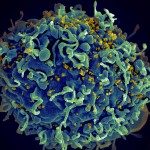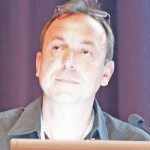About
Arthropod-borne alphaviruses are distributed worldwide and cause considerable human morbidity and mortality. Alphaviruses cause a variety of human diseases, with clinical signs varying from fever or rash to significant inflammatory pathologies including encephalitis (e.g. Venezuelian Equine Encephalitis virus) or severe myositis and arthritis (e.g.: Sindbis Virus, Ross River Virus (RRV), Chikungunya Virus (CHIKV)..). Sindbis virus is responsible for epidemics in North Europe, and is associated in man with persistent myalgia and arthralgia. Myositis and arthritis due to the alphaviruses CHIKV and RRV are also characterized by a significant percentage of lasting pain. Up to 12% of CHIKV-infected patients still have chronic symptoms three years after onset of the illness. Several studies indicate that chronic muscle and joint pain affects over 50% of RRV disease patients, which can persist for years after diagnosis (Harley et al., 2001). These chronic manifestations result in a significant loss of life-quality and an important socio-economical burden. RRV is found in the South Pacific and is responsible for around 5.000 infections per year in Australia [4]. CHIKV is known to be present in Africa and Southeast Asia since the fifties. It caused a massive epidemic in the Indian Ocean and India in 2005-2007 leading to millions of cases of disease, reaching even southern Europe, and spread to the American continent since the end of 2013 .
CHIKV and RRV are transmitted by mosquito bite and the acute phase starts after a short incubation period. After the resolution of the disease, some patients experience chronic arthritis with manifestations similar to those of rheumatic arthritis (RA). The mechanisms leading to the establishment of a chronic viral myositis and arthritis are poorly understood. In RA, synovial fibroblasts/synoviocytes are recognized as key cells in the pathogenic process. In inflammatory environment, these cells produce inflammatory cytokines and matrix degrading enzymes. Strikingly, the role of this cell population was not deeply investigated in alphaviral contaxt, except single report of synoviocyte infection in a patient with CHIKV chronic disease [8], and their susceptibility to CHIKV infection in a mouse model. Interestingly, other cells of the muscle/joint have been suggested to be infected by CHIKV and/or RRV, such as the chondrocytes (in a mouse model), the macrophages (mouse and primate models), and the satellite cells which are muscle cell progenitors (CHIKV infected patients) as targets of infection. Detected antigens suggest a constant infection of these tissues, for more than 6 month in some case, but viruses were never isolated so far.
Altogether, these data indicate persistence of CHIKV and RRV (with a more pronounced effect for this latter) in the muscle and joint, and possible infection of the different cell players, but none was specifically dedicated to the crosstalk between them in a persistent context, which is involved in persistent myositis and arthritis. This has to be evaluated in the context of the different factors that play a role in chronicity, such as the age, the viral load, and the historical background of previous muscle/joint pathologies. Interestingly, it was noted that CHIKV is likely to exacerbate of increase susceptibility to underlying joint diseases. The role of mosquito saliva can also be involved in pathogenesis and it is well documented for some arboviruses. In a Rift Valley Fever Virus mouse model, we demonstrated a change in viral tropism associated with a higher level of IL-6 in mice injected with a mix of saliva and virus compared to virus alone. Indeed, mosquito’s saliva contains numerous immune-modulatory compounds. Il-6 is known to play an important role in RA and both CHIKV and RRV diseases. Yet the effect of mosquito saliva in alphavirus infection has to be studied.
Mysositis and arthritis being complex diseases, elucidation of the interactions between these different cell populations in correlation with evaluation of mosquito factors will lead to a better understanding of the mechanisms of chronic viral inflammation.




